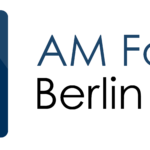
Opinion piece: Bringing Traceability into your digital diet
- Matthias Habdank
- May 5, 2023
- Opinion
- 0 Comments
Digital Transformation: are our eyes bigger than our stomachs?

Industry 4.0 is integral to the modern supply chain; from managing inventory, risk and logistics through to assuring quality and ESG compliance, efficiency gains and cost-savings enabled by the Fourth Industrial Revolution are being realised across industries. In a recent Ivanti Wavelink survey, roughly 85% of respondents signalled intention to invest in, or build upon, digital solutions within their organisation. But are these technologies still adding value?
The PwC 2023 Digital Trends in Supply Chain Survey found that only 17% of executives felt that their digital investments delivered the intended outcomes – a 3% decrease from last year. Moreover, lack of alignment between technology investments and long-term business strategy remains a stumbling block for many companies (Deloitte, 2023): employee reskilling, length of time to implement and lack of clear goals following adoption present some of the biggest hurdles to effective digital transformation.
In short: having more data looks hugely appealing…until you start having to digest it.
Traceability: breaking things down into bitesize chunks
Supply chain transparency and “product traceability” is not a new concept. However, it is only now, with the advent of digital technologies such as direct part markings, digital twins and blockchain, that the concept has become a reality. As daunting as these technologies sound, if implemented on the small scale – that is, down to the component level – data crunching becomes a lot more manageable – and valuable.
Industry is already recognising the benefits of this bottom-up approach: 58% of the most-used tools among respondents of the Ivanti Wavelink survey were hand-held mobile devices with scanning capabilities – not too dissimilar to our DPM Scan Pro technology!
We take direct part markings to the next level, integrating human-readable and machine-readable codes directly into the part to create a permanent link between the physical and the digital; once scanned by our DPM Scan Pro technology, the user gains a direct link to the part’s digital twin or database profile. Markings are automatically generated based on user-set parameters, and seamlessly integrated into components.
So how can item-level data help fulfil strategic supply chain goals? Let’s explore these in relation to the priorities of respondents to the PwC report:

24% respondents see managing and reducing COSTS as a main priority
23% respondents would like to see improved EFFICIENCY in their supply chain
30% respondents seek new INNOVATIONS to integrate into their business
Upstream from Downstream – Trace the journey of faulty parts: rapidly identify the source of the issue and reduce expenses relating to product recalls and machine downtime.
Less paperwork handling – shortens lead times through a reduction in bureaucracy. Workers have more time to complete value-adding tasks rather than exchanging documents.
Bridging the skills gap – In the case of our DPM Scan Pro app, traceability can help bridge knowledge gaps: an intuitive platform allows stakeholders from all areas to quickly find relevant product information.
Instant authentication – have your authorised suppliers, materials and compliance certificates digitally visible at every stage in the product lifecycle. Reduces risk associated with counterfeiting.
Overcoming data silos – part data can be made available to all members in your organisation. This helps overcome data silos and better align strategic decision-making across departments.
Link to your existing technology – direct part markings can link into your existing ERP, CRM or other platform to provide additional value-add. Seamless integration allows for easy adoption and scaling of traceability technologies.
Make reverse logistics viable – having a marking which stays with your part throughout its lifecycle opens up numerous opportunities for reverse logistics. If this process is already established in your organisation, Direct Part Markings enable this process to be streamlined.
All-in-one shipping label – trace an order from manufacturing through to delivery to a B2B or B2C customer. Supply chain stakeholders can view relevant data to inform decision-making
Sustainability – product lifecycle management is key for creating a circular economy. By bringing traceability into your workflow now, your products will be prepared for the arrival of the digital product passport
Reduce wastage in R&D – record the performance of your products under test conditions and streamline your continuous improvement process. Speed up development time and reduce the costs of material wastage.
Developing a traceable supply chain requires investment. High upfront costs for hardware and software with no clear KPI being fulfilled are very unattractive for investment. Starting at the part-level gives you a better idea of where traceability technology adds the greatest value in your supply chain. Once you see the benefits at the part level, you can create a clear roadmap of where the technology should be scaled, and what other Industry 4.0 technologies might complement your supply chain goals.
So, in conclusion, Tracebility solutions need not be another bloating technology which detracts from your strategic priorities – rather, it can be used as a tool to identify which digital solutions are best suited to your product or service. The key here is to be clear on the use case for the integration of your traceability solution.
Start small, digest your component data, then work your way up to bigger data pieces. That way, your digital diet improves gradually – without bloating out on unnecessary data.
Related Posts

A Traceable Journey: Birmingham and Back
- Matthias Habdank
- June 15, 2023
Our Scanning Software in Action Many of you ask us the question: what does a traceable workflow ..

COP28: How Digital Product Passports Add Value And Support Sustainability
- Matthias Habdank
- December 6, 2023
How End-To-End Traceability Supports Value Generation Across The Supply Chain It’s December e ..

